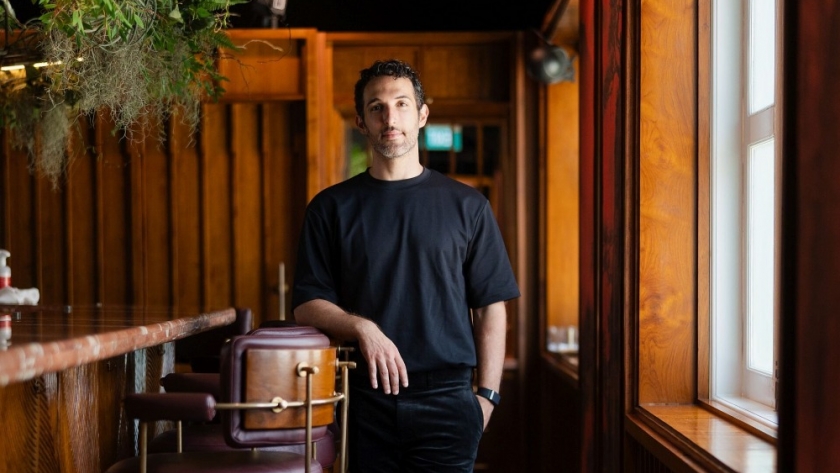
By Agroempresario.com
In 2021, a paper by chemical engineer and consultant Dave Humbird shook the foundations of the cultivated meat industry. His techno-economic analysis (TEA) painted a grim picture: that biomanufactured meat, while compelling in theory, faced nearly insurmountable economic and technical barriers at scale. For many investors and stakeholders, the paper served as a wake-up call — or a warning siren.
But now, four years later, a new report from Lever VC, a major foodtech investment fund, is turning that narrative on its head. In a striking rebuttal, Lever VC claims that not only is cultivated meat alive and well, but some leading companies are nearing profitability on a per-unit basis. "The death of cultivated meat has been greatly exaggerated," the report asserts, borrowing from the famous Mark Twain quote.
Amid political hostility, dwindling investment, and a lack of public playbooks for scaling cultured meat, many industry observers had begun writing off the sector as another overhyped biotech dream. Yet, quietly and with limited capital, some startups have made significant breakthroughs in cost reduction, scalability, and product innovation — achievements that could redefine the conversation around the future of protein.
The Lever VC report doesn’t mince words: “Humbird and peers have been proven spectacularly wrong.” The firm bases this claim on technical progress achieved by its portfolio companies and others in the cultivated meat space. From reduced media costs to higher cell densities and improved reactor designs, the progress seems difficult to ignore.
For instance, media — the nutrient-rich broth that feeds animal cells — was a key sticking point in Humbird’s projections. His TEA suggested that media costs could bottom out at $2.50 per liter in the most optimistic scenario, with other projections reaching as high as $6.50 per liter. Today, Lever VC reports that several cultivated meat companies are operating with media costs below $0.50 per liter, a seismic reduction that radically alters unit economics.
Media cost, of course, doesn’t tell the whole story. Cell density — the concentration of biomass within bioreactors — is another crucial variable. Humbird estimated that densities would top out at around 60 grams per liter in air-sparged fed batch systems. But companies like Believer Meats and Clever Carnivore are reportedly hitting densities between 60 and 90 grams per liter — far exceeding earlier projections.
Taken together, these advancements translate into dramatically lower production costs. According to Lever VC, several companies are now producing cell mass at a cost of $10 to $15 per kilogram — and some have already broken below the $10/kg barrier. That’s still higher than conventional meat, but a far cry from the hundreds or even thousands of dollars per kilo seen in the industry’s early years.

What accounts for these improvements? A range of strategies, says Lever VC. These include:
These tactics aren’t just theoretical. They’re being deployed in real production environments, according to the report, which bases its findings on confidential technical audits conducted across multiple firms.
Dave Humbird, for his part, has not remained silent. Speaking to AgFunderNews, he contested several of Lever VC’s claims, particularly around media costs. “My paper never said the media would cost $6.50/L,” he said. “In fact, I calculated something closer to $3/L.” He also criticized the report’s lack of citations, noting that much of Lever VC’s data appears to come from confidential sources — not peer-reviewed publications.
“Comparing media costs on a $/L basis is odious,” Humbird added, arguing that true cost comparisons must include metrics like yield per liter and feed conversion ratios. He accused Lever VC of cherry-picking numbers and relying on unverifiable internal reports.
Nick Cooney, managing partner at Lever VC, pushed back. “Our media costs are apples-to-apples comparisons based on full technical diligence,” he insisted. “We know the component concentrations and total liters required per kilo of biomass.”
However, due to non-disclosure agreements, Lever VC has been unable to release detailed company data, making the debate murky for external observers.
Why don’t we see more of this promising data in academic journals? According to Cooney, the answer is simple: trade secrets. “Most cultivated meat startups are not going to publish their formulations,” he said. “As a VC fund, we’re in a unique position to see this data under NDA.”
This creates a frustrating paradox. On one hand, skepticism persists due to the lack of publicly available proof. On the other, the companies making real progress are incentivized to keep their methods secret.
This gap between peer-reviewed TEAs and actual industry performance may explain why pessimism lingers in public discourse, even as private breakthroughs quietly accumulate.
Perhaps the most vivid illustration of cultivated meat’s potential comes from Australia-based startup Vow. The firm recently received preliminary regulatory approval to sell its cultivated Japanese quail product in Australia and New Zealand — the first cultivated meat to reach that milestone in the region.
What’s more impressive is how Vow got there. Its production process is lean, low-cost, and unburdened by unnecessary complexity. The company’s custom-built 20,000-liter bioreactor — the largest of its kind — was assembled in-house in just 14 weeks for under $1 million. By comparison, off-the-shelf systems with pharmaceutical specs would have cost at least 80% more.
According to CEO George Peppou, Vow is just “a couple of months away” from being unit margin positive — a milestone few thought possible this early in the game.
Unlike startups focused on perfectly replicating ground beef or chicken nuggets, Vow is pursuing a different path: unique, premium, and differentiated products. “We’re not trying to recreate what already exists,” said Peppou. “We want to offer something new.”
This approach has practical advantages. Vow’s current product line — which includes cultivated foie gras and parfait — doesn’t require expensive tissue structuring. Instead, the firm grows undifferentiated cells in large bioreactors, avoiding the complexity of muscle fiber alignment or fat marbling.
It also enables simpler packaging and distribution. For example, their parfait is shelf-stable, sold in jars, and doesn’t oxidize when opened — a consumer-friendly feature that appeals to retailers and chefs alike.
And Vow’s first-generation products are already being served in high-end restaurants in Singapore. Later this year, the company plans to launch in Australian restaurants, followed by a retail rollout of their foie gras and parfait.
Still, Vow isn’t stopping at simple textures. The next wave of products will incorporate advanced “texturing” — creating more complex mouthfeels and forms without resorting to full tissue engineering or secondary bioreactors.
“We’re working on three different texturing technologies,” Peppou told AgFunderNews. “Some developed in-house, others with partners.” These include ready-to-eat charcuterie and center-of-plate proteins — all designed to transition from occasional indulgences to habitual consumption items.
But Peppou is adamant about one thing: costly, biopharma-style tissue engineering is a dead end. “The only people who care about tissue modeling inside bioreactors are scientists,” he said. “They’re not our target market.”
The cultivated meat sector has had a bumpy ride — layoffs, shutdowns, and regulatory hurdles have all made headlines. But these setbacks may be obscuring the steady progress being made in laboratories and pilot plants across the globe.
For investors, policymakers, and consumers, the takeaway is clear: don't count this industry out. While it may take years — even decades — for cultivated meat to replace industrial-scale animal farming, its near-term potential is stronger than many realize.
As Peppou puts it, “Amid all this grim news of bans and bankruptcies, you can walk into several restaurants in Singapore today and eat cultivated meat at a normal price. That’s not a fantasy — it’s reality.”
In short, the cultivated meat revolution might not be dead. In fact, it may have just begun.
